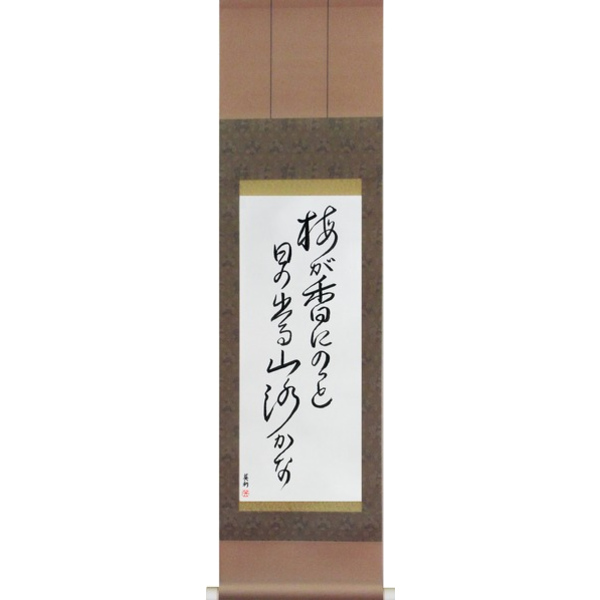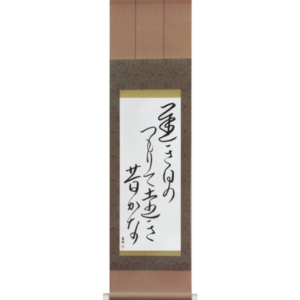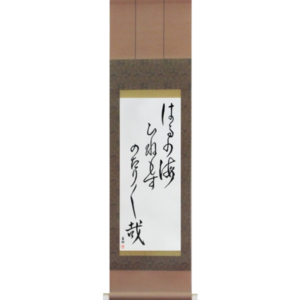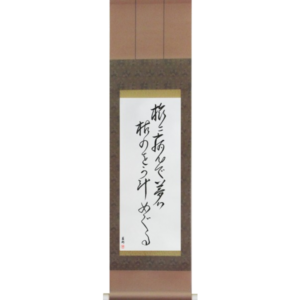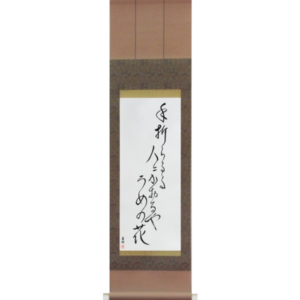H3003 Haiku by Basho – In the plum blossom scent, …
by Master Japanese Calligrapher Eri Takase
In the plum blossom scent,
the sun pops out,
a mountain path [1]
|
mume ga ka ni notto hi no deru yamaji kana |
梅が香に のつと日の出る 山路かな |
| bashou | 芭蕉 |
Plum blossoms are the harbinger of spring. In this poem, I can imagine that Basho is walking head down along a cold, misty mountain path. He smells the fragrance of the plum blossom and looks up and, suddenly, there is the sun. After a long winter, the fragrance of the plum blossoms contains all the promises of spring.
R. H. Blyth suggests the translation:
Suddenly the sun rose,
To the scent of the plum-blossoms
Along the mountain path. [2]
Daniel C. Buchanan suggests the translation:
On sweet plum blossoms
The sun rises suddenly.
Look, a mountain path! [3]
Buchanan writes, “The combination of the beauty and fragrance of plum blossoms lining the mountain path as the sun appears over the horizon, excites the wonder and admiration of the poet.” [3]
Harold G. Henderson suggests the translation:
With the scent of plums
on the mountain road – suddenly,
sunrise comes! [4]
Calligraphy Notes:
1) The kanji 梅 is today read ume. In Basho’s time, the reading was mume which we use here. This does not change the calligraphy, only how the poem is read.
2) This poem predates the modern introduction of the “small tsu” in hiragana. At the time the poem was written, the word and the context determined the pronunciation so today we write のっと (read notto) but the original poem wrote のつと (also read notto but written as notsuto). In these designs I have opted to use the modern form.
Taken together then, the modern reading of Basho’s haiku is ume ga ka ni notto hi no deru yamaji kana.
References:
[1] Translation by Timothy L. Jackowski, Takase Studios, LLC.
[2] 107.
[3] 13.
[4] 49.
